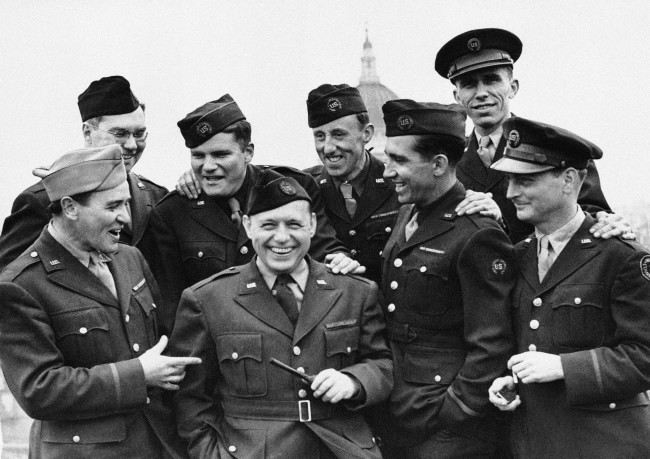
Those great photographs from the D-Day landings are no accident. They were taken by the staff of the Associated Press. You can see them in the picture above:
Associated Press staffers on the NewsPhoto invasion team, bottom row from left to right are: Peter Carroll, E.K. Butler, George Bede Irvin, and Jack Rice. Top row, left to right are: Byron Rollins, Harry Harris, Edward Worth, Horace Court on May 4, 1944.
War is an exciting time to be a journalist. It can also be terrifying. Many were plucked from routine city beats and dropped on a battlefield.
And you were tied to one side. After indoctrination at the War department public relations bureau, you were handed a correspondent’s uniform as an accredited war correspondent with U.S. Army forces. You look like a soldier with a typewriter and a camera. But you’re no soldier. You’re there to report. You’re there to bear witness, keep spirits high and give your boss something that wills ell to the folks back home.
And you’re not immune to the battle. You’re in it. The dangers are clear.
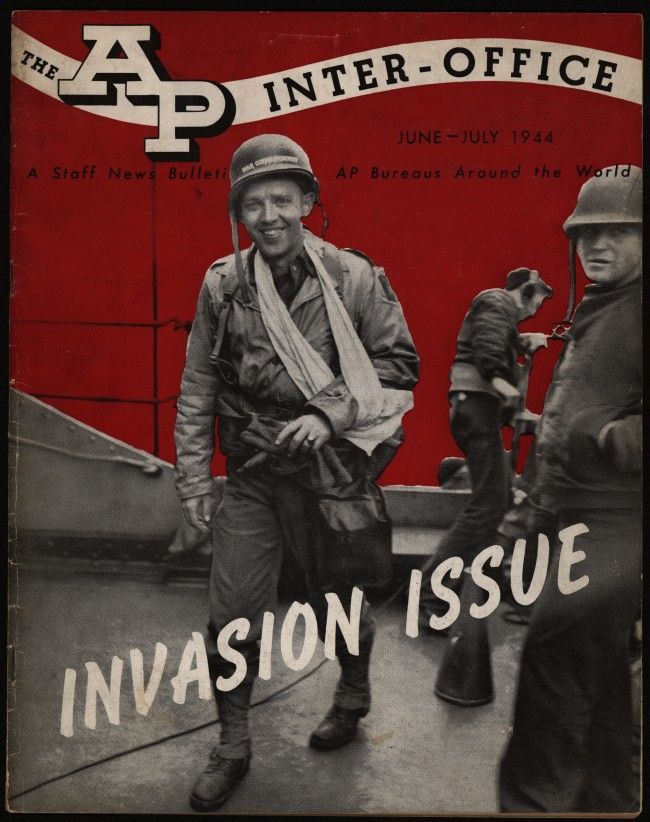
Cover of The AP Inter-Office, a News Bulletin for AP Bureaus Around the World. This issue highlighted AP’s coverage of D-Day. Cover image shows Henry P. Jameson, AP’s first casualty of the invasion and the first to be injured of the entire press corps.
Date: 01/06/1944
Not all of the reporters survived.
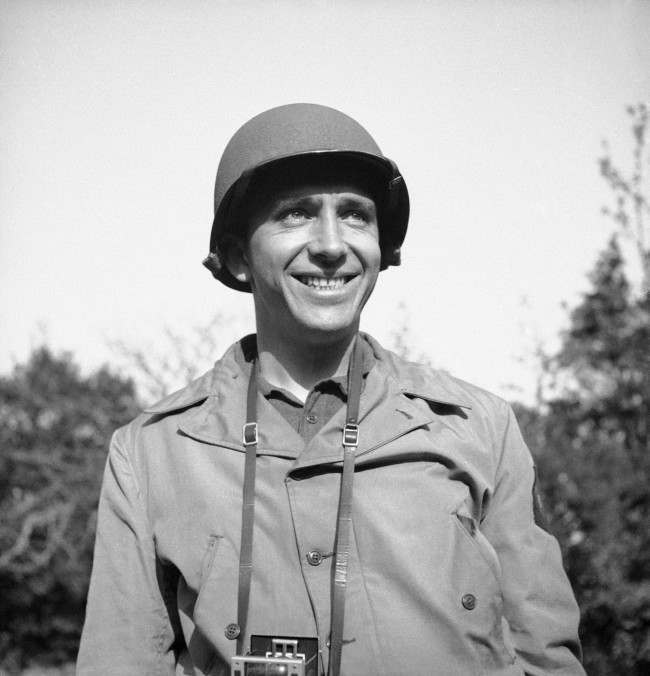
Associated Press photographer, George Bede Irvin was killed on July 25 near Pont Hebert in Normandy while working with the Ninth Air Force.
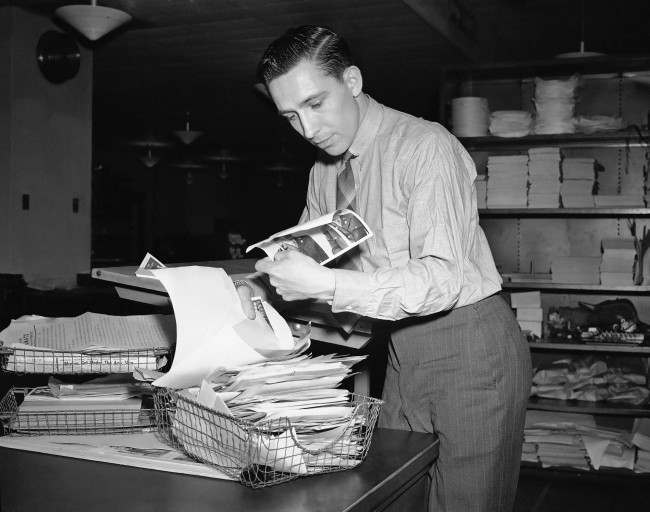
We won’t mention all the great newsmen and newswomen who chronicled the war. But we can take a moment to remember a few who did:
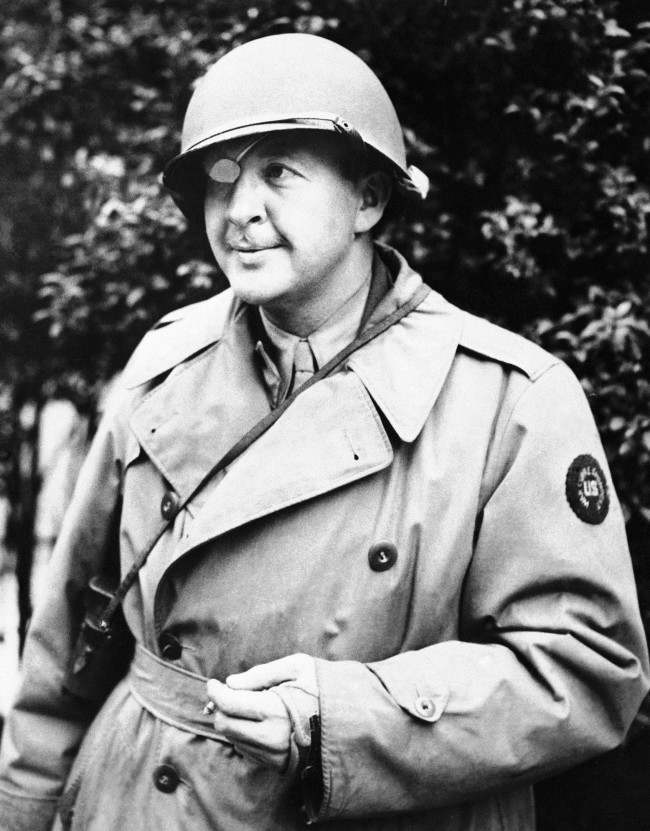
This undated photo shows Associated Press reporter Roger Greene a few days after the June 6, 1944, D-Day landing in France. Greene was the first seaborned war correspondent to land on the beach of Normandy in the D-Day invasion. He accompanied British forces across the Channel. (AP Photo)
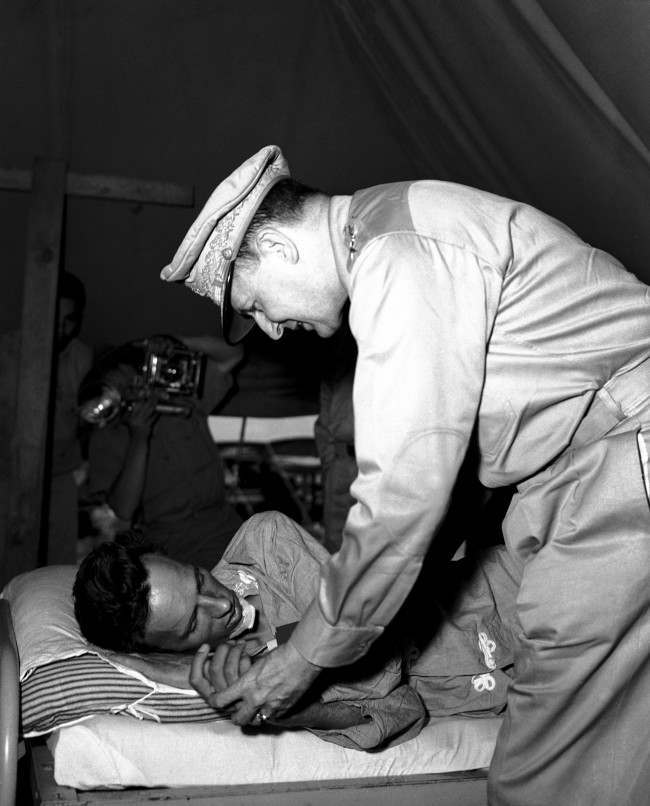
General Douglas MacArthur leans sympathetically over the hospital bed of Vern Haugland, war correspondent of the Associated Press who fought his way out of the New Guinea jungle after being lost for 43 days. General MacArthur awarded Haugland the Silver Star as a symbol of his ‘devotion and fortitude’ when he visited the 34-year-old Associated Press correspondent somewhere in New Guinea on Oct. 3, 1942. (AP Photo/Pool)
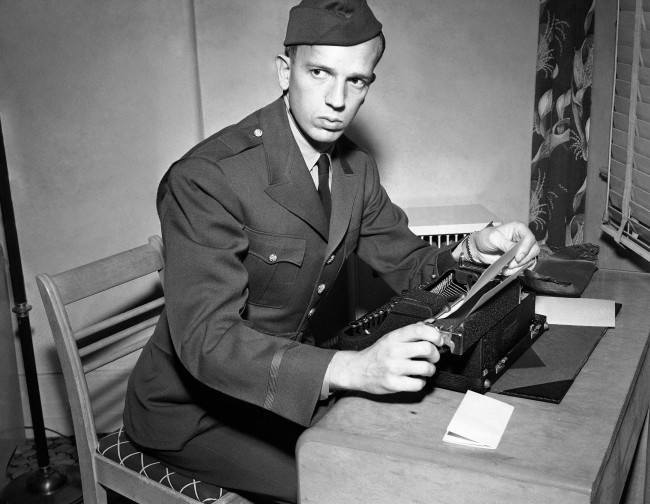
Associated Press war correspondent Vern Haugland was listed as missing on August 12, 1942 after a plane in which he was passenger disappeared in a storm between Australia and New Guinea. Date and location of this photo is unknown. (AP Photo)
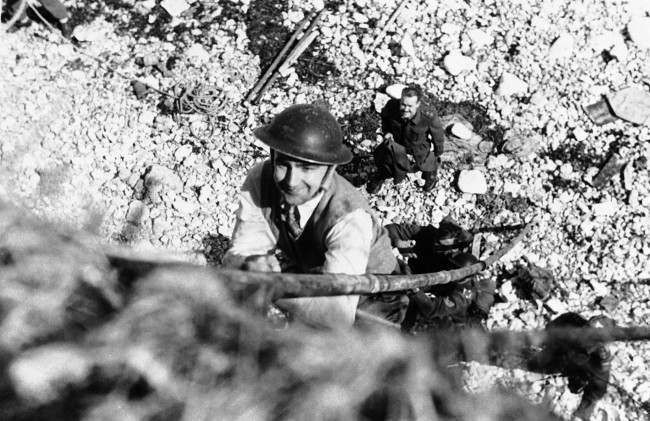
J. Wes Gallagher, Associated Press war correspondent in London, takes lessons in the Tommy-gun with the Canadian Army’s Commando School, June 10, 1942. This is in sharp contrast to his usual beat of covering activities of the U.S. Embassy in London. (AP Photo)
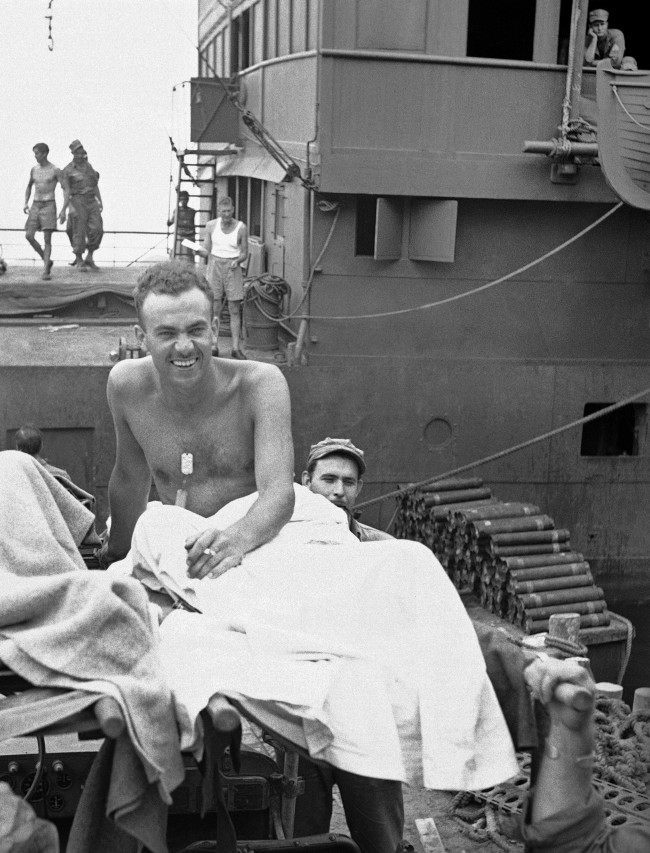
Grinning cheerfully as he sits on his litter on the dock at a New Guinea base on August 5, 1943, William F. Boni of New York, Associated Press War Correspondent, heads for treatment of mine shell splinter wounds received on July 9 when a barge on which he was leaving Nassau Bay was strafed by Japanese planes. On August 5 it was announced that he had been given the Purple Heart Medal. (AP Photo)
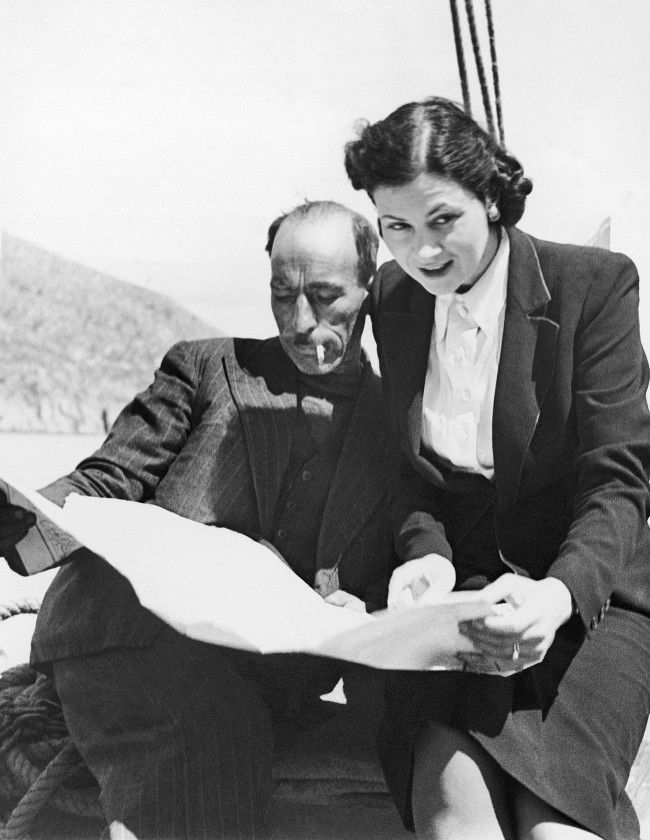
‘It was owned by a sponge fisherman. Its 30 feet, from stem to stern, held 14 persons and a dog…’ Alma De Luce recalls as she tells in an exclusive Wide World series of stories how she and her husband escaped from Greece to Turkey in a small fishing boat after the Greeks bowed to the Germans and Italians. Her husband, Daniel De Luce, had been covering the war for The Associated Press and Wide World and Mrs. De Luce, with the captain of the little fishing boat on April 10, 1942, travelled with him from London to Budapest, followed him to Athens, fled with him to Turkey and accompanied him to Iran and India before returning to this country. Her husband is now covering the war in Burma. (AP Photo) Date: 10/04/1942
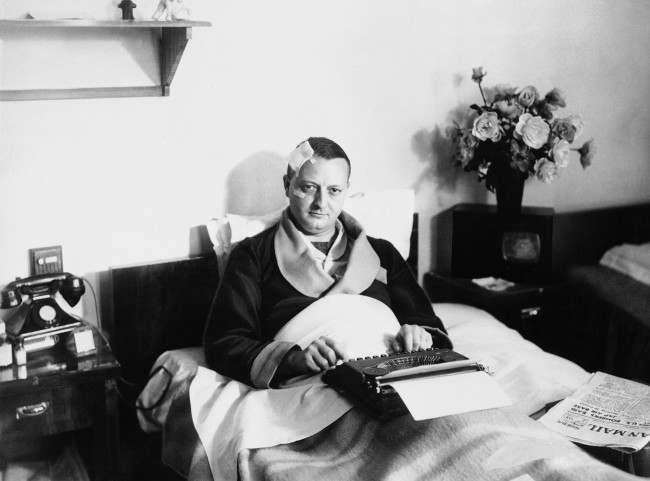
Larry Allen, Associated Press war correspondent who almost lost his life before being rescued in the Mediterranean after the British cruiser Galatea was sunk in mid-December, is shown abed in an Alexandria, Egypt, hospital, Jan. 28, 1942 typing out the story of his experience. (AP Photo)
Date: 28/01/1942
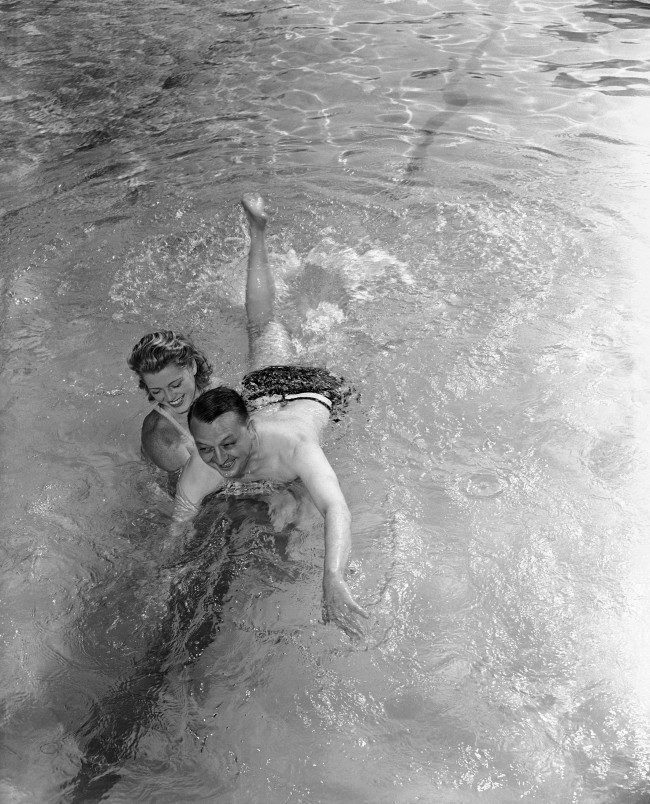
Larry Allen, Associated Press war correspondent who nearly drowned when the British Cruiser Galatea was torpedoed and sunk, takes his first swimming lesson in Miami, Florida on Feb. 17, 1942, fulfilling a vow he made while struggling for his life in the Mediterranean. Helping him make the lesson a pleasure is his instructor, Peggy Diehl. Larry’s ambition was to learn to swim 20 feet, ‘Enough to escape the suction of a sinking ship’ but when he met his instructor he raised it to 100 feet. (AP Photo)
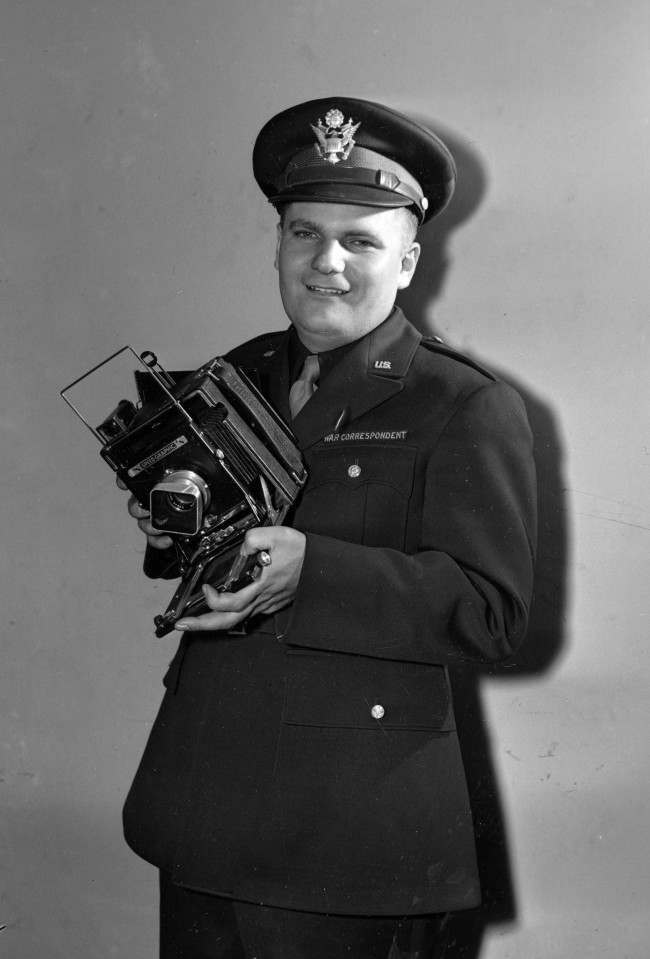
Harold Harris, Associated Press staff photographer and war correspondent assigned to the London bureau, is seen on February 29, 1944. (AP Photo)
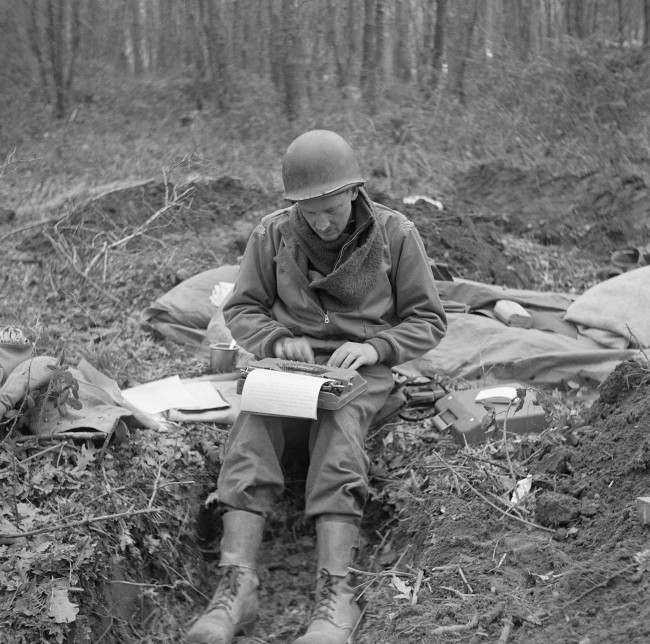
Don Whitehead, Associated Press correspondent, writes his story of the landing at Anzio Beach in Italy, from a fox hole in February 1944. (AP Photo/Bill Allen)
Date: 16/02/1944
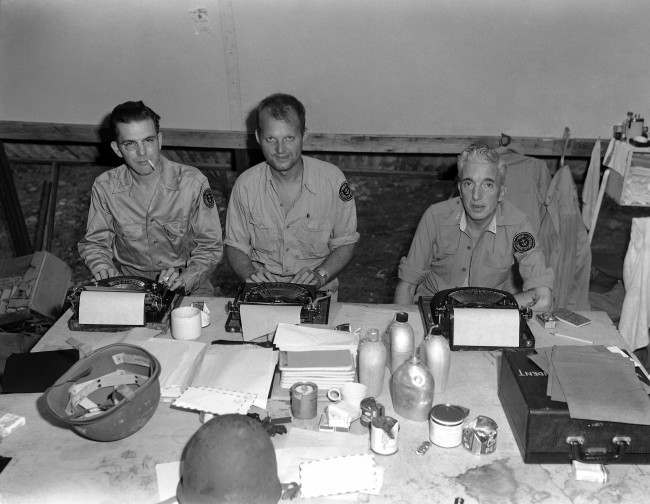
Three war correspondents work in the press hut on Guadalcanal, Nov. 3, 1943. Left to right: Art Burgess, Associated Press; Leif Erickson, Associated Press and Pat Robinson, INS. (AP Photo/Allan Jackson)
Date: 03/11/1943

Grant MacDonald, Associated Press war photographer, formerly of the Seattle, Wash. bureau, stands on the deck of a troop transport bound for Kiska, Sept. 4, 1943, accompanied the U.S. and Canadian forces that landed on the Aleutian island on August 16. (AP Photo)
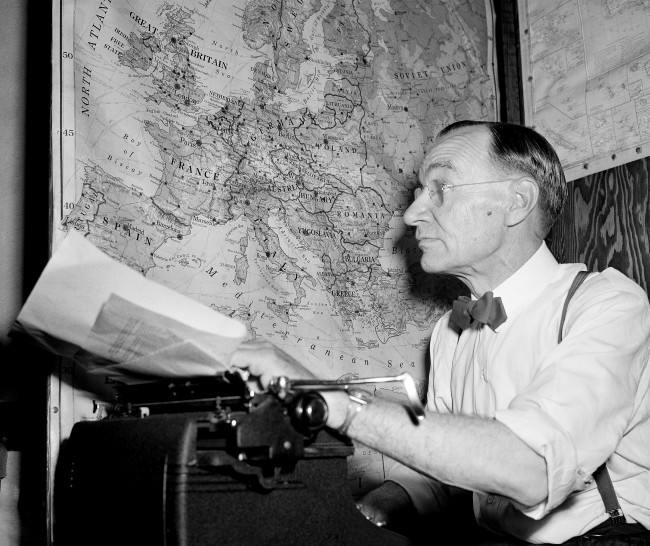
Kirk Simpson, Associated Press war analyst and Pulitzer Prize winner, retires to his typewriter and his maps to study the day’s war dispatches and report for Associated Press member newspapers, Sept. 2, 1943. (AP Photo)
Date: 02/09/1943
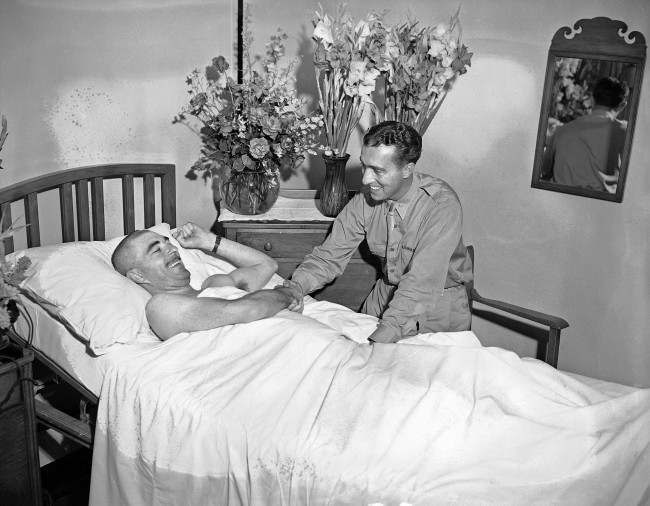
George Tucker, Associated Press war correspondent thanking Capt. James J. Ryan, of Philadelphia and chief of the Neurological Div. of the U.S.A. base hospital at Cairo on a two week leave on August 9, 1943. George has been under the care of the captain. (AP Photo/John Rooney)
Date: 09/08/1943

Associated Press war correspondent J. Wes Gallagher arrived in New York by plane on June 6, 1943, from the North African front with two reminders of the war, a cast around his body and a souvenir collection of axis guns. Gallagher suffered a compression-type spine fracture in a jeep accident near Bizerte. (AP Photo)
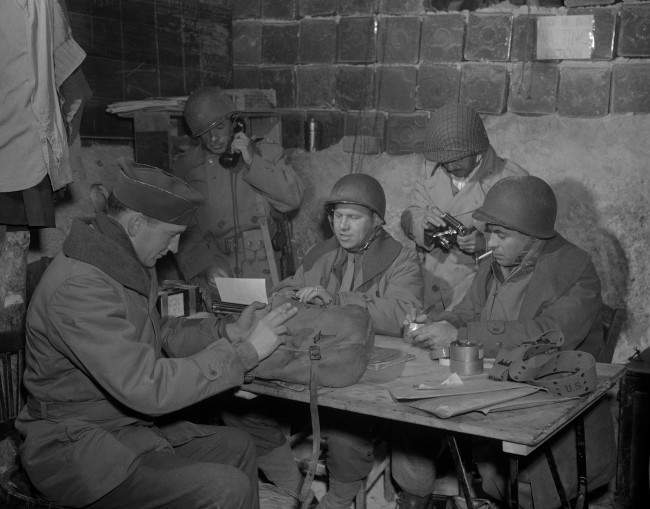
Hal Boyle (center, at typewriter), Associated Press war correspondent, writes a dispatch on North African fighting while Harrison Roberts (second from right), Associated Press photographer, removes film from his camera in an improvised bomb proof field headquarters in North Africa on April 1, 1943. Lt. Joseph E. Schmidt (left foreground), public relations officer, of Harrisburg, Pa., puts copy into a dispatch bag and Capt. Jay R. Vessels (left rear), of Minneapolis, Minn., who is on military leave from the Associated Press, checks air transport command on a field phone. Irving Smith (right) prepares caption material for his film. (AP Photo/Harrison Roberts)
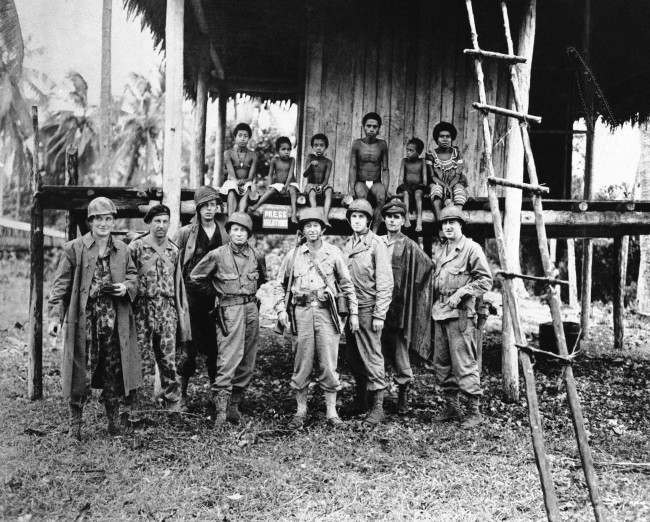
War correspondents covering the allied occupation of Kiriwina Island (Trobiands) line up in front of a native hut in 1943 which served as Press Relations headquarters. Left to right: Peter Hemery, Australian Broadcasting Commission; Frank Bagnall, Australian Department of Information movie photographer; Vern Haugland, Associated Press; Col. Lloyd Lehrbas, GHQ Press Relations Officers; Col. E.P. Herndon, USA; Ed Wallace, National Broadcasting Company; Maj. John Bearman, Australian Press Relations Officer; and Frank Smith of the Chicago. (AP Photo)
Date: 01/01/1943
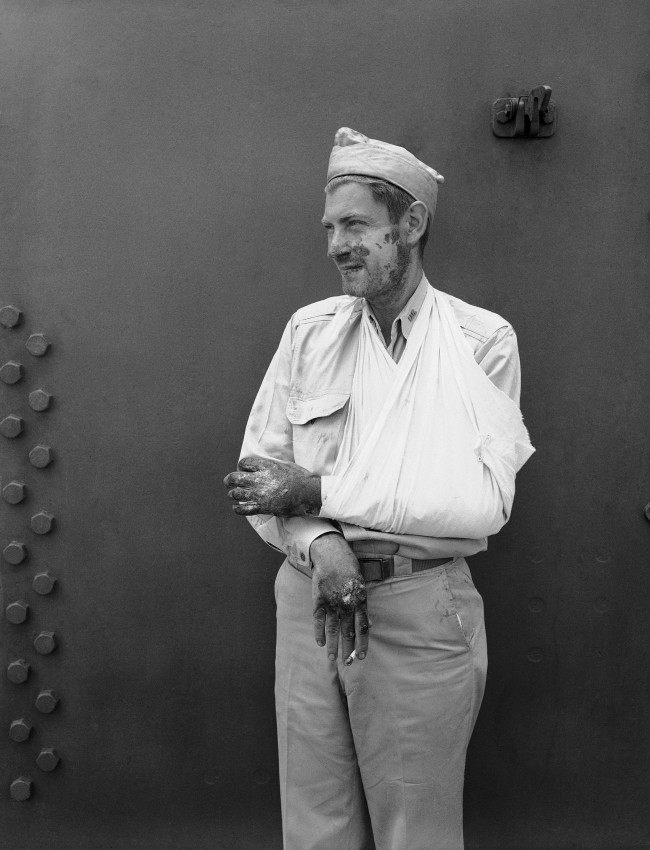
Charles H. McMurtry, Associated Press war correspondent shown Oct. 31, 1942, is recovering from burns received about the face and hands when a Japanese bomber crashed on the signal bridge of an aircraft carrier, a few feet from where he was standing, in the naval battle off the Santa Cruz Islands in the South Pacific on October 26.
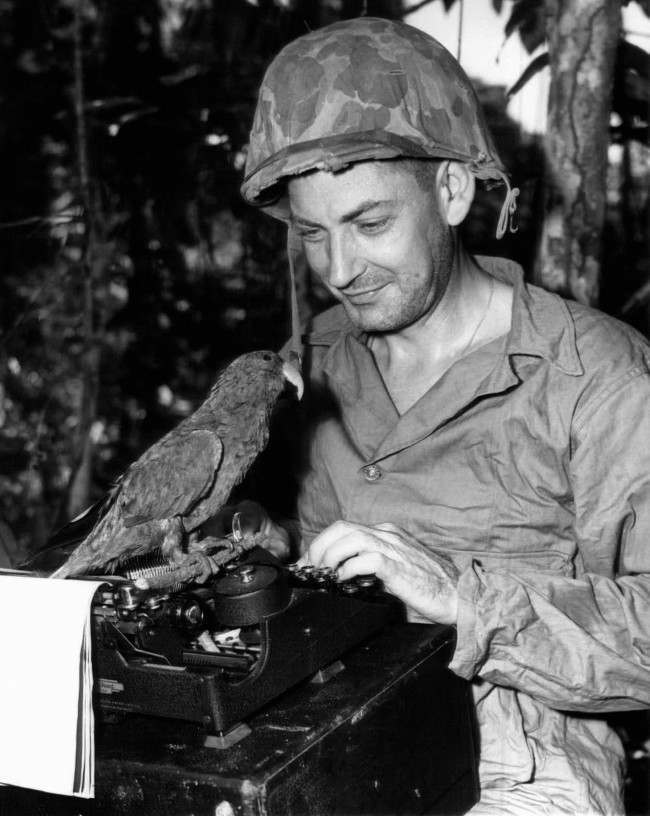
Charlie McMurtry, Associated Press war correspondent, writes some copy on Guadalcanal as his pet, ‘Flags,’ the psychopathic parrot, Nov. 25, 1945 who flew 10,000 miles without once flapping his wings, but committed hara-kiri by hanging, sits perched on his typewriter. McMurthy acquired the bird at Treasury Island while enroute from Bougainville to Guadalcanal. (AP Photo)
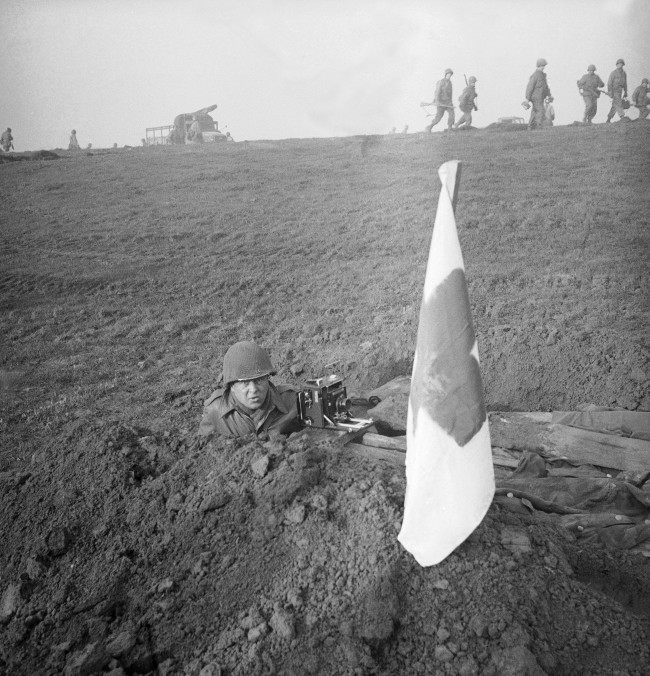
Henry Griffin, Associated Press war photographer takes cover in a fox hole on the banks of the Rhine on March 24, 1945 while in background can be seen infantry waiting to cross over. (AP Photo)
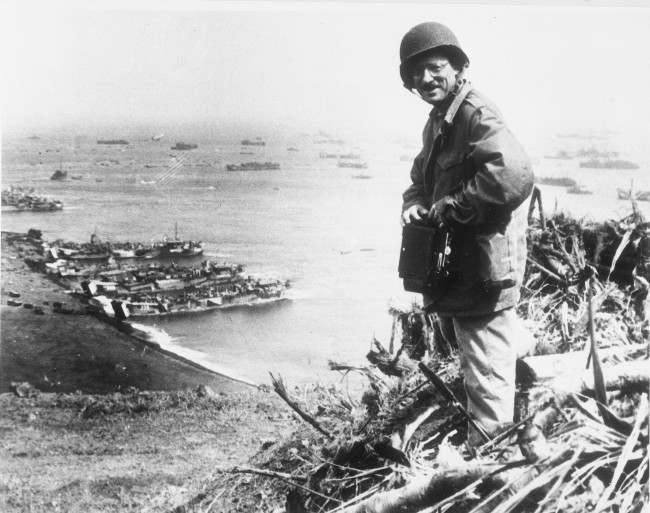
Joe Rosenthal, Associated Press photographer, is shown with his camera equipment looking over Iwo Jima, Japanese volcano island, in March 1945 during World War II. (AP Photo/U.S. Marine Corps)
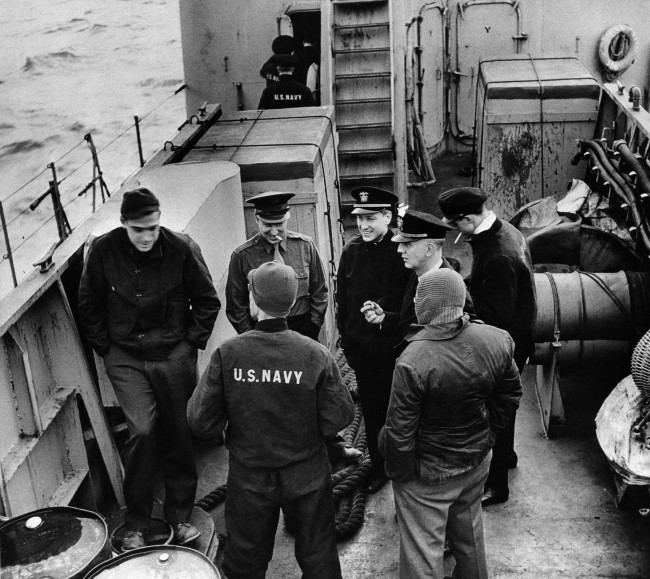
A group of press correspondents chat on board a USS Landing Craft Infantry (LCI) enroute to amphibious maneuvers somewhere off the coast of England on May 8, 1944. With faces to camera, from left: Clark Lee of International News Service; Bill Higginbotham of United Press; Lt. Comm. Barry Bingham, of Louisville, Ky.; Lt. John Mason Brown, New York City; Lt. Byer, with cigarette, Navy ensor. Back to camera: John Moroso, left, of Associated Press; and A.J. Liebling of the New Yorker magazine. (AP Photo)
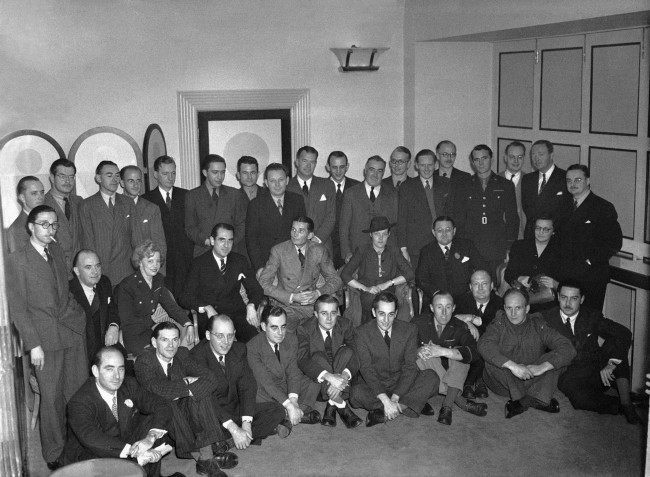
Mr. Lloyd Stratton, assistant general manager of the Associated Press and president of the Associated Press of Great Britain, Ltd., hosted a luncheon in the Savoy Hotel for AP staffers, Oct. 24, 1943. Seated in front row, from left to right are: A.I. Goldberg, H.W. Tetlow, Henry B. Jameson, E.D. Ball, W.W. Hercher, E.C. Daniel, E.S. Worth, R.G. Massock, H.J.R. Winter, Fabio Ziffer. Second row, from left to right, are: M. Rosenbaum, Reginald Williams, Ruth Cowan, R. E. Bunnelle, London bureau chief, Lloyd Stratton, Jean O’Donnel, J.J. Wurzel, secretary of the Associated Press of Great Britain Ltd., and Barbara Wace. Back row, left to right, are: R.N. Sturdevant, Gladwin A. Hill, Tom Halfpenny, E. Blake Sullivan, Pugh Moore, George Bede Irvin, Leo Branham, Russell Landstrom, John F. Chester, Judson O’Quinn, W. Franklin, K.C. Boxall, Jack Smyth, N.J. Badderly, W.S. White, H.W. Bagley, Roger D. Greene, and L.E. Hawkins. (AP Photo) Date: 24/10/1943
Would you like to support Flashbak?
Please consider making a donation to our site. We don't want to rely on ads to bring you the best of visual culture. You can also support us by signing up to our Mailing List. And you can also follow us on Facebook, Instagram and Twitter. For great art and culture delivered to your door, visit our shop.

